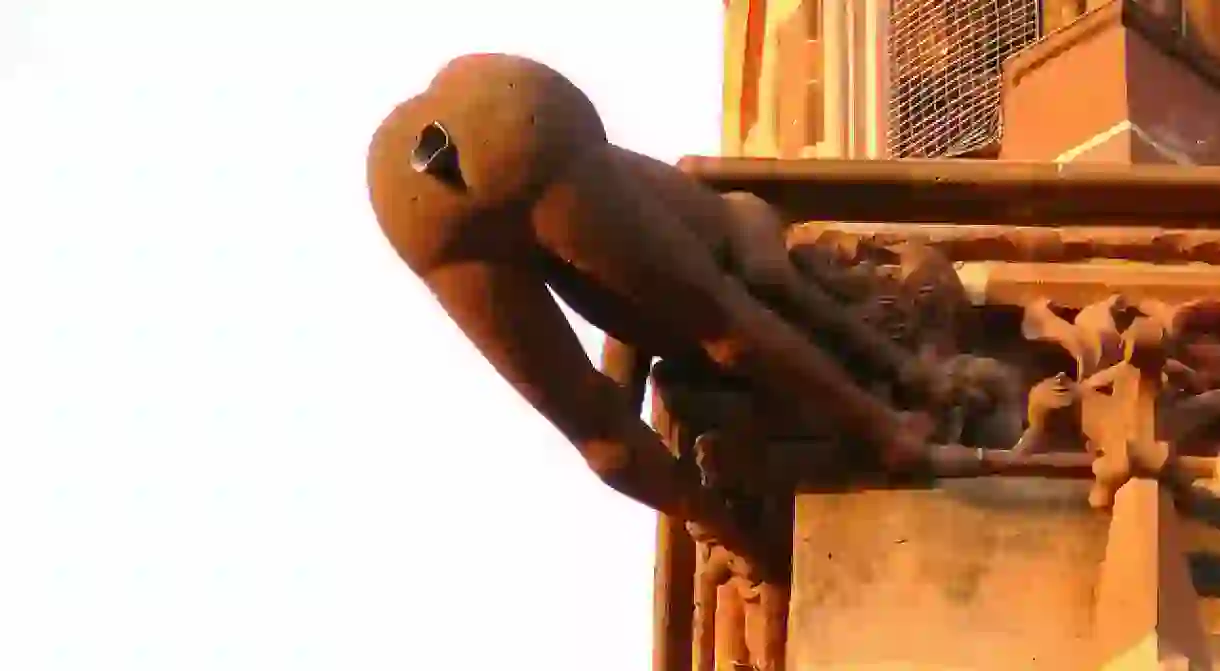Why Gargoyles Are Not Always The Stuff Of Nightmares

Throughout history, gargoyles have tended to be most commonly associated with images of horrifying, winged demons and monsters. Some are as strangely impressive as they are terrifying. There are others, however, whose particularity lies not in horror, but in their ironic character – intended to provoke derision, ridicule, and even incite laughter. Culture Trip sheds fresh light on these fascinating creations.

This is the case with the gargoyles that can be found at both the Church of Saint Benedict in Glinton, Cambridgeshire, and at the Cathedral of Freiburg in Germany. Both these temples have the same design of gargoyle: a representation of a man bending over and peering out backwards from between his legs, with his naked bottom on full display facing outwards towards anyone approaching the cathedral. As an additional detail, the stonemason who created this gargoyle built a short gutter into the hole of the gargoyle’s bottom, making it look on rainy days as if the gargoyle is urinating. On the whole, it is an unashamedly crude and somewhat amusing gargoyle, and a far cry from the stereotypical notion of gargoyles as nightmare-inducing monsters.
There is an ancient legend that explains the motivation of the stonemason to carve the Glinton and Freiburg gargoyles in this manner. The story has it that the stonemason involved in the construction of both these churches had been assured by his bosses that the salary he would receive would be consistent with the quality of the work he produced. However, upon completion of the job, the stonemason was rewarded for his work with a wretched amount of pay that didn’t come close to what he had been expecting. It was his dissatisfaction with this remuneration that motivated him to carve the crude gargoyle in protest. He also had the foresight to build the Glinton gargoyle into the church in such a way that the gargoyle’s buttocks were facing in the direction of the Peterborough Cathedral, and thus towards the Archbishop who was in charge of paying for his work. Similarly, in the case of the German cathedral, the buttocks of the gargoyle point towards London.

The Church of Saint Benedict is, otherwise, a beautiful and picturesque religious structure dating back to the 12th century, whose tower is topped by a spire, sharp, narrow and svelte, whose shadow dominates the flat landscape of the whole area. The church itself was immortalized in the poem Glinton Spire by John Clare in 1882; however, there is no doubt that what makes the church so well-known to Glinton residents today is not the poem, but this gargoyle, built out of spite by a dissatisfied stonemason.
As for the Cathedral of Freiburg in Germany, it is very much a Gothic-style building. Part of the cathedral was built on the foundations of an original church, which had been there since 1120 – almost as long as the city of Freiburg itself. The cathedral is home to an impressive number and variety of gargoyles, all especially expressive and magnificent, that decorate the building’s cornices and buttresses. It is fascinating to observe closely each of the figures that adorn this cathedral; but it is the cathedral’s twin of the Glinton gargoyle that has become one of its greatest curiosities. To find it, you must take a tour of the cathedral, in order to locate it just in front of the restaurants in the Cathedral Square.

Realistically, we should not actually be very surprised or shocked by a medieval art manifestation of this kind of coarseness and ridicule. In fact, we ought to laugh at such demonstrations. It is necessary to keep in mind that the Middle Ages was a period in which religion ruled the lives of individuals, often breeding religious fanatics who were dedicated wholeheartedly to serving the interests of their Church. There are some who would argue that this period of history was a very dark and difficult time. Others, however, maintain that the medieval individual simply had a different perspective on life, and that their blind belief in the existence of another life after death was cause for ridiculous paintings and mocking sculptures. Therefore, works such as the Glinton and Freiburg gargoyles were actually rather typical of this period of history.













